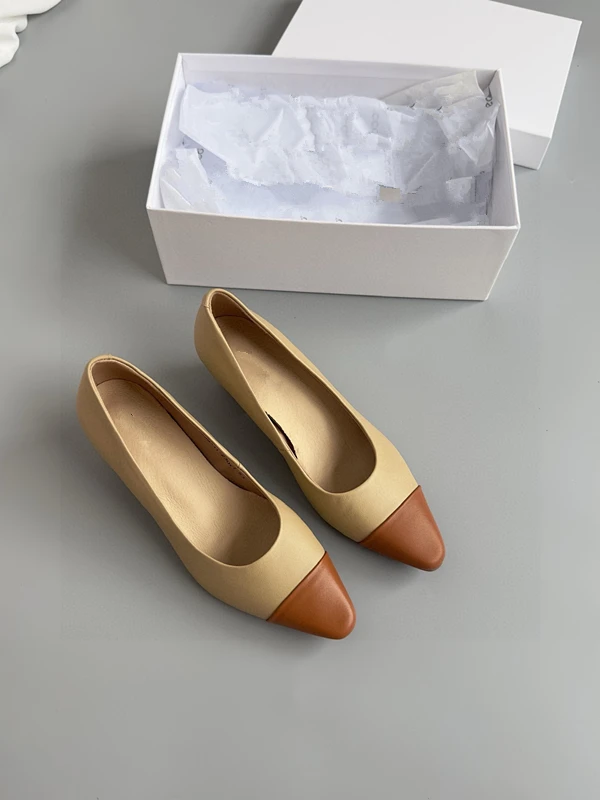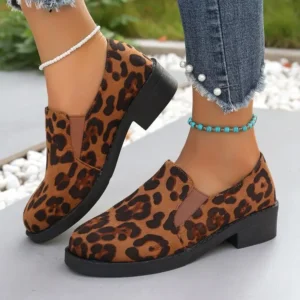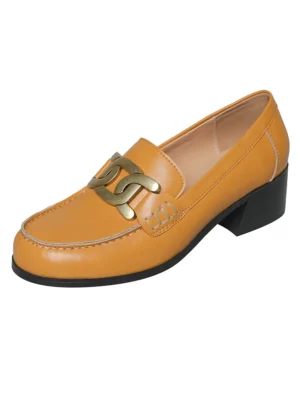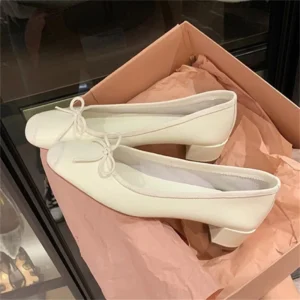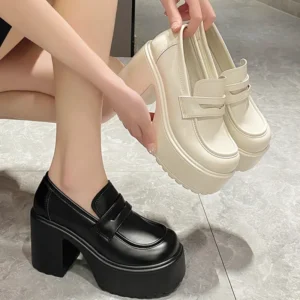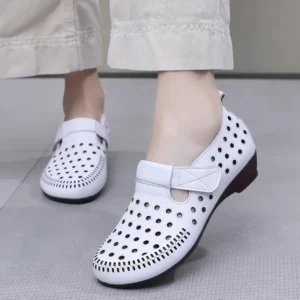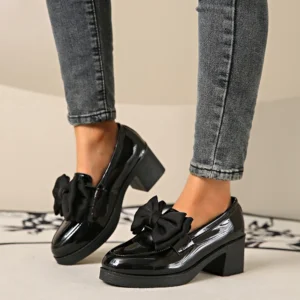1. The Critical Role of Foot Alignment: More Than Just Comfort
When we think about our overall health, foot alignment rarely tops the list of priorities. Yet, proper foot alignment is the foundation for our entire body’s well-being. Foot alignment refers to the neutral positioning of your feet, ensuring proper weight distribution and natural arch support as you stand and move.
The concept of the “kinetic chain” helps us understand why foot alignment is so crucial. This principle shows how each joint in your body affects others up the chain – from your feet to your ankles, knees, hips, and ultimately your spine. When your feet are properly aligned:
- Your weight distributes evenly across your foot surface
- Your arches function optimally to absorb shock
- Your ankles maintain proper position without rolling inward or outward
- Stress is minimized on your knees, hips, and lower back
Unfortunately, misalignment leads to common issues many of us face daily. Overpronation (feet rolling inward), supination (feet rolling outward), and plantar fasciitis (inflammation of the tissue connecting your heel to toes) are just a few problems that can develop.
Among all footwear features affecting alignment, heel design stands out as particularly significant. As we’ll explore, the square heel concept offers a biomechanical advantage that can transform your comfort and alignment. Creating proper alignment through footwear isn’t just about immediate comfort—it’s an investment in your long-term well-being.
The importance of selecting appropriate footwear extends beyond casual wear into professional office loafer outfits where both style and proper support are essential for day-long comfort.
2. Understanding Square Heel Architecture: Design Elements That Support Alignment
Square heels (also called block heels) are characterized by their distinctive broad base, solid construction, and generous surface contact area. Unlike narrower heel styles, they distribute weight across a wider platform, creating inherent stability. These heels typically employ materials chosen for durability and support, including:
- Stacked leather layers providing natural cushioning and classic aesthetics
- Wooden cores offering structural integrity and firmness
- Modern resin compounds delivering lightweight durability and shock absorption
To truly appreciate the square heel advantage, let’s contrast them with other popular heel types:
| Heel Type | Contact Surface Area | Weight Distribution | Stability | Alignment Support |
|---|---|---|---|---|
| Square/Block | Large (4-9 sq cm) | Even across heel | Excellent lateral stability | Superior support for neutral alignment |
| Stiletto | Minimal (1-2 sq cm) | Concentrated at single point | Poor, requires constant stabilizing | Forces unnatural weight shift forward |
| Wedge | Full length of foot | Continuous but angled | Good forward/backward | Moderate; often lacks arch support |
| Rounded | Moderate (3-5 sq cm) | Centered but not stable | Fair; allows rolling | Limited lateral support |
What makes square heels truly superior for alignment is their structural integrity. The design resists torque (twisting forces) that would otherwise strain your ankles and alter your gait. The broad base creates a stable platform that minimizes the lateral movement that can stress joints and ligaments. Additionally, the even pressure distribution prevents the forefoot compression common with narrower heel styles.
For those interested in exploring the technical aspects of these designs, our definitive guide to square-heeled shoes provides comprehensive information on how their structure supports proper alignment throughout the day.
Those ready to experience the alignment benefits firsthand can explore our collection of women’s square heel loafers featuring these supportive design elements.
3. Biomechanics of Better Alignment: The Science Behind Square Heels
The science behind how square heels improve alignment involves complex biomechanical principles that directly affect how your body moves and supports itself. Understanding these mechanisms helps explain why many foot specialists recommend this design for everyday wear.
Enhanced Stability Mechanics
Square heels fundamentally transform how forces interact with your feet during standing and walking:
- Ground reaction forces (the upward force from the ground) distribute more evenly across the wider base instead of concentrating at a single point
- Mediolateral (side-to-side) movement decreases significantly, reducing ankle wobbling by up to 45% compared to narrower heels
- The center of pressure (the point where your weight is centered) remains more stable during the stance phase of walking
Optimal Weight Distribution Benefits
The broader base of square heels creates a ripple effect of positive changes throughout your foot:
- Metatarsal pressure (ball of foot) reduces by up to 30% compared to narrower heels of similar height
- Weight distributes more naturally from heel to toe, mimicking a healthier barefoot gait pattern
- Plantar fascia strain decreases as weight spreads more evenly, reducing tension on this crucial connective tissue
Natural Foot Kinematics Support
Square heels work with your body’s natural movement patterns rather than forcing unnatural adaptations:
- Heel strike occurs more naturally with improved shock absorption
- The transition through midstance to toe-off flows more smoothly, reducing jerky compensatory movements
- The subtalar joint (the joint below your ankle) maintains a more neutral position, preventing excessive rolling inward or outward
Connection to Posture Improvement
The alignment benefits extend well beyond your feet:
- Compensatory movements throughout the body decrease as your foundation becomes more stable
- Muscular effort for maintaining balance reduces, allowing those muscles to function optimally without fatigue
- Your spine naturally aligns better when your feet are properly positioned, reducing the common “swayback” posture seen with unstable footwear
Pressure mapping studies have consistently shown that square heel designs create a more even distribution of forces across the foot compared to narrower alternatives. This scientific evidence supports what many wearers intuitively feel: greater stability and comfort throughout the day.
The relationship between footwear design and overall comfort extends beyond just heels, as explored in our definitive guide to footwear design comfort, which examines multiple factors affecting alignment and well-being.
4. Pain Reduction and Prevention: Square Heels as a Therapeutic Design
Square heels don’t just improve alignment—they can actively help alleviate and prevent common foot pain conditions. This therapeutic aspect makes them valuable for anyone experiencing discomfort or seeking to prevent future issues.
Alleviating Common Foot Conditions
Square heels provide specific benefits for several painful foot conditions:
- Plantar Fasciitis: The even weight distribution reduces tension on the fascia (the band of tissue connecting your heel to toes), allowing irritated tissue to heal and preventing further strain
- Metatarsalgia: Pressure on the ball of the foot decreases significantly with proper weight distribution, relieving the burning pain characteristic of this condition
- Achilles Tendinopathy: The moderate height of most square heels (1-2 inches) provides optimal elevation to reduce tension on the Achilles tendon without forcing the foot into an unnatural position
Reducing Strain on Joints
The alignment benefits of square heels create a cascade of positive effects on your joints:
- Ankles: Lateral stability prevents excessive rolling that can strain ligaments and tendons surrounding the ankle
- Knees: Proper foot alignment ensures the knee tracks correctly over the foot, reducing rotational forces that can damage cartilage and ligaments
- Hips and Lower Back: When your foundation is stable, your hips maintain better alignment, reducing compensatory tilting that often leads to back pain
Mitigating Structural Issues
Square heels can help slow the progression of certain structural foot problems:
- Bunion Development: By reducing pressure on the forefoot and preventing excessive pronation, square heels minimize forces that can worsen bunion formation
- Morton’s Neuroma: The wider toe box often paired with square heels provides space for toes, reducing compression on nerves between metatarsal heads
- General Foot Fatigue: Even weight distribution means no specific area of the foot bears excessive burden, reducing overall fatigue and discomfort
Podiatric principles of therapeutic footwear design emphasize stability, proper weight distribution, and shock absorption—all features inherent to well-designed square heels. While not a replacement for medical treatment for serious conditions, these design elements align with professional recommendations for everyday footwear.
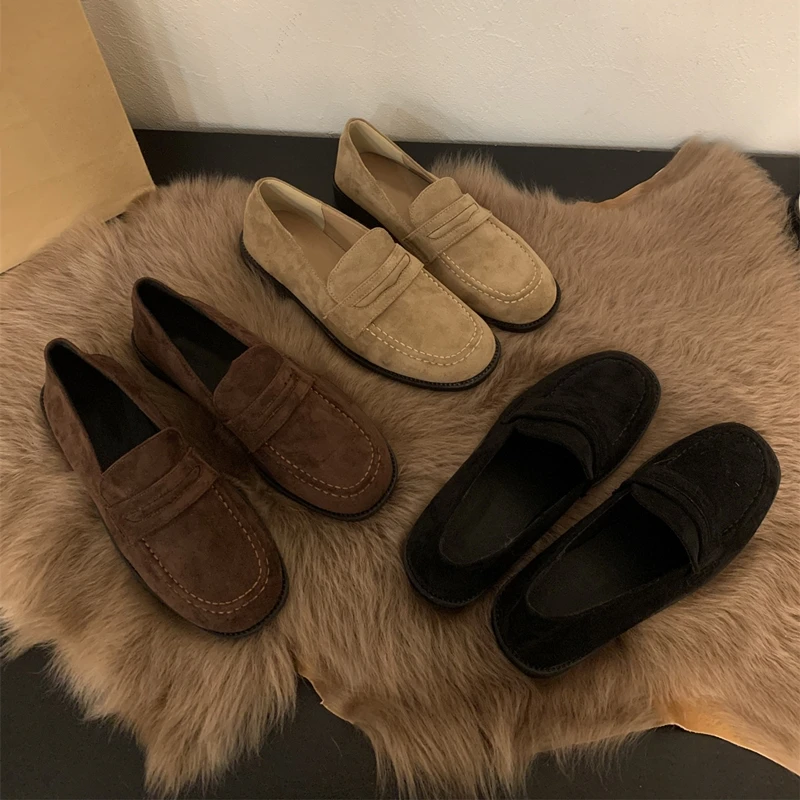
Our collection of women’s block heel loafers showcases designs specifically created to provide this stability and alignment support for all-day wear.
5. Posture and Spinal Health: The Upward Impact of Square Heels
The effects of square heels extend far beyond your feet, creating a positive chain reaction throughout your entire posture. Understanding this foot-to-spine connection helps explain why many people report improved overall comfort when switching to more supportive heel designs.
The Foot-to-Spine Connection
Your feet form the foundation for your entire skeletal system, with alignment issues rippling upward:
– Each step sends impact forces through your feet, ankles, knees, hips, and into your spine
– Your body automatically compensates for instability at any point in this chain
– These compensations often involve muscle groups working harder than intended, creating tension and fatigue
Promoting Neutral Pelvic Position
Square heels help maintain your pelvis in its optimal neutral position:
– Unlike high stilettos that tilt the pelvis forward excessively
– Unlike completely flat shoes that may allow the pelvis to tilt backward in some people
– The moderate height of most square heels (1-2 inches) provides ideal support for natural pelvic alignment
Reducing Lumbar Lordosis
Posture analysis comparing different heel types shows square heels help maintain natural spine curvature:
– High, unstable heels typically increase lumbar lordosis (excessive inward curve of lower back)
– Square heels reduce this exaggeration, allowing your spine to maintain its natural, healthy curves
– This reduction in exaggerated posture decreases pressure on spinal discs and facet joints
Decreasing Muscular Compensation
When your feet are stably aligned:
– Back muscles work less to maintain your upright position
– Hip and core muscles function more efficiently rather than constantly compensating
– Neck and shoulder tension often decreases as a downstream effect of improved lower body alignment
The cumulative effect of these improvements is a reduced risk of back pain, decreased overall fatigue, and improved daily comfort. For many people, especially those who stand or walk extensively throughout the day, this postural improvement can be transformative for their comfort and energy levels.
These principles are especially important when selecting footwear for professional settings, as explored in our guide to mastering professional loafers which considers both style and postural benefits.
6. Balance, Stability, and Proprioception: The Confidence Factor
One of the most immediate benefits wearers notice with square heels is improved confidence in movement. This isn’t just a psychological effect—it stems from real improvements in balance and stability.
Proprioception—your body’s awareness of its position in space—plays a crucial role in how confidently you move. Square heels enhance this sense in several ways:
- The broader base creates more surface contact with the ground, providing additional sensory feedback to your feet
- Reduced ankle wobbling allows your proprioceptive system to focus on movement rather than constant stability corrections
- More consistent pressure distribution improves your ability to detect subtle shifts in weight and position
These stability benefits become particularly evident across different walking conditions:
– On uneven sidewalks, the wider base prevents ankle turning that might occur with narrower heels
– On slippery surfaces, the increased ground contact improves traction and reduces slip risk
– When navigating crowds or tight spaces, improved stability means less concern about losing balance during unexpected movements
The reduced fall risk is especially valuable for:
– Those with existing balance concerns
– People recovering from lower limb injuries
– Anyone transitioning to heeled shoes after primarily wearing flats
– Those with naturally flexible or hypermobile joints
Perhaps most importantly, this improved physical stability translates to psychological confidence. When you don’t have to consciously focus on maintaining balance with each step, you free mental energy for other tasks and interactions. This creates a positive feedback loop where physical stability enhances confidence, which in turn promotes more natural, relaxed movement.
Over time, regularly wearing stable footwear may even improve your proprioceptive abilities through consistent training of these sensory systems, potentially benefiting balance even when barefoot.
For those interested in maximizing both stability and style, our guide to mastering structured loafers with square heels provides practical insights on selecting styles that support balance and confident movement.
7. All-Day Comfort: Making Heeled Footwear More Accessible
The practical reality of square heels extends beyond theoretical benefits—they fundamentally change how long and comfortably you can wear heeled footwear. This expanded wearability makes heels accessible to people who previously found them too uncomfortable for extended use.
Extended Comfortable Wear Time
Square heels significantly increase the duration you can comfortably wear heeled shoes:
– Many wearers report 2-3 times longer comfortable wear compared to similar height stilettos
– The reduced muscle fatigue from better stability means comfort doesn’t rapidly deteriorate throughout the day
– More even pressure distribution prevents the “hot spots” that often develop with prolonged wear of narrower heels
Professional Application Benefits
These comfort advantages are particularly valuable for professionals who stand for extended periods:
– Healthcare workers appreciate the stability combined with professional appearance
– Retail employees report reduced foot and back fatigue during long shifts
– Educators who stand while teaching find they can maintain energy levels more consistently
– Office professionals can maintain polished appearance without sacrificing comfort
Fatigue Reduction Mechanisms
The comfort extension happens through several specific mechanisms:
– Reduced muscular effort for stabilization conserves energy throughout the day
– More natural gait pattern requires less compensation from other muscle groups
– Even weight distribution prevents specific areas from becoming painfully overloaded
– Improved alignment reduces overall body fatigue from poor posture
Versatility Across Activities
The practical comfort of square heels translates to increased versatility:
– Transitioning from workplace to evening activities without footwear changes
– Navigating varied environments from office carpeting to city sidewalks
– Accommodating longer walking distances that would be prohibitive in less stable heels
– Participating in standing social events without constantly seeking a place to sit
This accessibility ultimately leads to increased mobility and activity levels for many wearers, removing the limiting factor that uncomfortable footwear can impose on daily life.
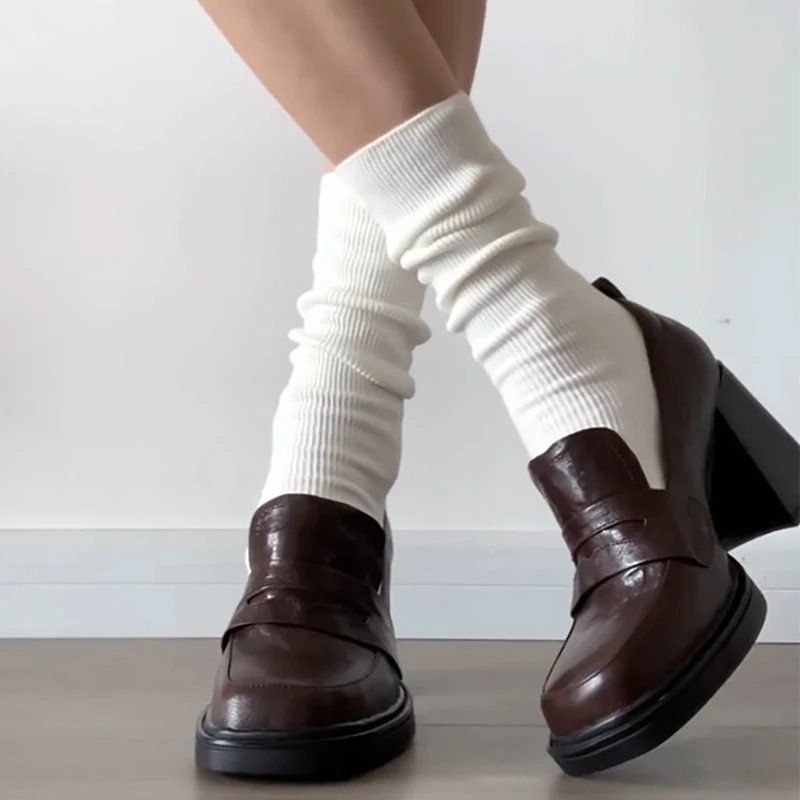
For professional environments, understanding how to wear loafers in the office can help maximize both comfort and appropriate professional presentation. Those prioritizing all-day comfort might also appreciate our selection of women’s comfortable flat loafers for occasions when even minimal heel height isn’t desired.
Women's Comfortable Flat Loafers, Women's Leopard Print Loafers, Women's Low Heel Loafers
$82.50 Select options This product has multiple variants. The options may be chosen on the product pageWomen's Block Heel Loafers, Women's Heeled Penny Loafers, Women's Monk Strap Loafers
$194.04 Select options This product has multiple variants. The options may be chosen on the product pageWomen's Block Heel Loafers, Women's Square Heel Loafers, Women's Square Toe Flat Loafers
Price range: $73.61 through $86.41 Select options This product has multiple variants. The options may be chosen on the product pageWomen's Black Platform Loafers, Women's High Heel Loafers, Women's High Platform Loafers, Women's White Platform Loafers
$106.67 Select options This product has multiple variants. The options may be chosen on the product pageWomen's Comfortable Flat Loafers, Women's Leather Flat Loafers, Women's Round Toe Flat Loafers
$124.88 Select options This product has multiple variants. The options may be chosen on the product pageWomen's Black Heeled Loafers, Women's Black Platform Loafers, Women's Block Heel Loafers, Women's Chunky Heel Loafers
$72.58 Select options This product has multiple variants. The options may be chosen on the product page
8. Expert Perspectives: What Foot Specialists Say About Square Heels
Foot health professionals consistently highlight the benefits of square heels when discussing optimal footwear design. Their professional perspectives add weight to the case for this supportive style.
“From a podiatric perspective, the ideal heel distributes weight evenly while minimizing lateral instability,” explains one leading foot health specialist. “Square heels accomplish both objectives better than most alternatives, particularly for everyday wear.”
Biomechanical studies support these expert opinions. Research analyzing gait patterns shows that square heels produce movement patterns more closely resembling natural walking than narrower heel designs. Pressure mapping studies demonstrate more even weight distribution across the foot, with significantly reduced focal pressure points that often lead to pain.
Ergonomic footwear design principles that align with square heels include:
- The importance of a stable base of support
- Minimizing unnecessary muscle activation during standing and walking
- Allowing for natural movement patterns rather than forcing adaptation
- Providing adequate surface area for weight distribution
There appears to be strong consensus among foot health professionals about the advantages of wider heels, particularly for those with existing foot concerns or who wear heels regularly. Many recommend square heels as a compromise that maintains style while minimizing the negative biomechanical effects associated with narrower designs.
However, experts do note some areas needing further research, including the optimal height-to-width ratio for different foot types and activities, and how specific square heel designs might be optimized for various foot conditions.
These professional perspectives reinforce that choosing square heels isn’t just about following fashion trends—it’s a decision supported by health professionals concerned with long-term foot wellness and function.
For those interested in exploring various heel designs, our collection of women’s heeled loafers offers options that balance style with the biomechanical advantages discussed by foot specialists.
9. Selecting the Right Square Heel: Features for Optimal Alignment
Not all square heels are created equal when it comes to alignment benefits. Understanding key design features helps you select options that maximize support while meeting your style preferences.
Key Design Features for Evaluation
When assessing square heel footwear for alignment benefits, pay attention to:
- Base width measurements: Look for heels with base width at least 60% of the heel’s height for optimal stability (e.g., a 2-inch heel should have at least a 1.2-inch wide base)
- Optimal height considerations: Most foot specialists recommend 1-2.5 inches as the ideal height range balancing elevation with stability
- Material quality: Select materials with some shock absorption capacity—stacked leather or rubber-cushioned bases outperform solid plastic or wooden heels for comfort
- Heel-to-sole transition: Smooth transitions between heel and sole provide better weight distribution than abrupt changes
- Heel counter stability: A firm heel counter (the back part surrounding your heel) ensures your foot doesn’t slide within the shoe
Complementary Features That Enhance Alignment
For maximum alignment benefits, look for these additional features:
- Integrated arch support: Moderate arch support works with the heel design to maintain proper foot positioning
- Cushioning distribution: Cushioning should be placed at high-pressure areas (heel and ball of foot) rather than uniformly
- Adequate toe box: Space for toes to spread naturally prevents compression issues that can affect gait
- Flexibility balance: The shoe should flex at the ball of the foot but remain relatively firm in the midfoot for support
- Secure fastening: Laces, buckles, or secure slip-on designs keep the foot properly positioned over the heel
The ideal proportions vary slightly by individual foot characteristics, but generally, a square heel width of 1-2 inches provides optimal stability for most wearers. Height should typically be limited to 2-3 inches for everyday wear, with the heel positioned directly under the calcaneus (heel bone) rather than set back.
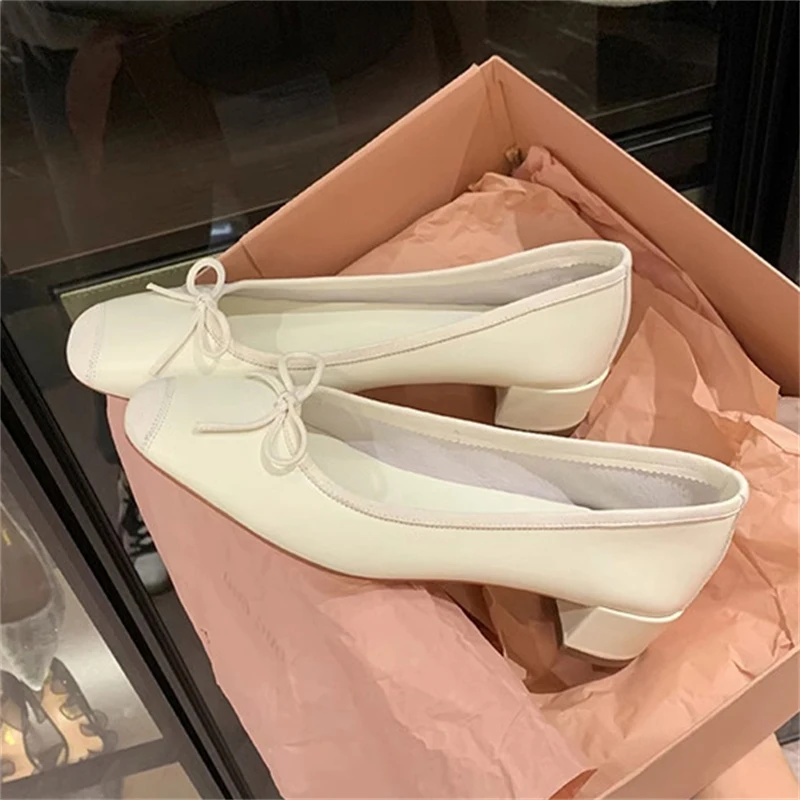
For more comprehensive guidance on selecting appropriate professional footwear that incorporates these principles, our ultimate guide to women’s loafers for the office provides detailed recommendations tailored to workplace needs.
10. Who Benefits Most? Identifying Your Alignment Needs
While square heels offer advantages for most wearers, certain foot types and conditions stand to gain particular benefits from this design. Understanding your specific needs helps determine if square heels are especially appropriate for your situation.
Specific Foot Types and Conditions
Square heels provide notable benefits for people with:
- Mild to moderate pronation: The stability helps counter the inward rolling tendency, guiding the foot toward neutral alignment during standing and walking
- Supination tendencies: The wider base provides reassurance and prevents exacerbation of outward rolling
- General foot fatigue and discomfort: Even weight distribution reduces pressure points that lead to tiredness and pain
- Morton’s neuroma or metatarsalgia: Reduced forefoot pressure can alleviate symptoms of these common forefoot conditions
- Mild bunion formation: Proper alignment may help prevent progression, though existing bunions require appropriate toe box width
Age-Related Considerations
Square heels offer advantages across age groups but are particularly valuable:
– For middle-aged adults experiencing natural changes in foot fat padding and support
– For older adults concerned about balance and stability while maintaining style
– For younger wearers seeking to prevent the development of alignment issues
Activity-Level Appropriateness
Your daily activities influence the importance of stable footwear:
– High-activity professionals who stand or walk extensively throughout the day gain significant benefits
– Those who frequently transition between sitting and standing find the stability aids in these transitions
– People navigating varied environments (office to outdoors, different floor surfaces) appreciate the adaptability
Professional Requirements
Different workplace needs can be met with appropriate square heel selections:
– Corporate environments: Modest height (1-2 inches) square heels provide professional appearance with all-day comfort
– Creative fields: More varied designs and heights while maintaining the alignment benefits
– Customer-facing roles: Comfort for extended standing combined with polished appearance
– Healthcare settings: Lower square heels with slip-resistant soles balance professional look with practical requirements
It’s important to recognize that severe structural foot issues generally require medical intervention beyond footwear selection. While square heels can complement treatment plans for many foot conditions, they should not replace professional care for serious problems.
For those requiring minimal heel height while still benefiting from proper alignment features, our selection of women’s low heel loafers offers appropriate options that maintain comfort and support.
11. Are All Block Heels Created Equal?
Not all block or square heels provide the same alignment benefits, despite similar appearances. Understanding these distinctions helps you select truly supportive options rather than designs that merely look stable.
The most significant differences between generic block heels and optimally designed square heels include:
Heel placement is critical—truly supportive designs position the heel directly under the calcaneus (heel bone), while some fashion-focused versions set the heel slightly back, creating less stable leverage. The materials used significantly impact function—higher quality square heels incorporate shock-absorbing elements within their structure, while purely decorative versions may use solid, inflexible materials that transmit impact directly to your joints.
Construction quality determines longevity of support—well-constructed heels maintain their shape and supportiveness over time, while poorly made versions may compress unevenly, creating instability with wear. The heel-to-sole transition area should provide continuous support; many lower-quality designs have abrupt changes that create pressure points.
When evaluating block heels for alignment benefits, look beyond basic appearance to these more subtle design elements that truly determine how they’ll affect your comfort and alignment.
12. Can Square Heels Correct Existing Alignment Issues?
Square heels provide excellent support for proper foot alignment but have limitations regarding correction of established issues. It’s important to maintain realistic expectations about their therapeutic potential.
The distinction between support and correction is significant—square heels can help maintain proper alignment and prevent worsening of mild issues, but they cannot reverse structural changes that have already occurred. They serve as accommodative devices rather than corrective ones.
For moderate to severe alignment issues, professional intervention from podiatrists or orthopedic specialists is necessary. This might include custom orthotics, physical therapy, or in some cases, surgical correction. Square heels can complement these treatments by providing a stable foundation but shouldn’t replace professional care.
Complementary approaches for alignment issues include appropriate stretching and strengthening exercises, proper warm-up before activity, and gradually introducing supportive footwear rather than making sudden changes. Many foot specialists recommend a comprehensive approach combining proper footwear, targeted exercises, and professional treatment when needed.
13. Frequently Asked Questions About Square Heels and Alignment
What is the ideal height for square heels to provide alignment benefits?
Most foot specialists recommend 1-2.5 inches as the optimal height range. This moderate elevation provides postural benefits without excessive forefoot pressure or alignment challenges. Higher heels (3+ inches) may still benefit from a square design but will introduce some alignment compromises regardless of shape.
How do square heels compare to orthopedic shoes?
Square heels represent a middle ground between fashion-focused footwear and purely orthopedic designs. While not specifically corrective like orthopedic shoes, quality square heels incorporate many supportive principles (stability, even weight distribution) in more mainstream styles. Some orthopedic brands now offer square heel designs that combine therapeutic features with contemporary aesthetics.
How can I determine if my square heels provide proper support?
Look for stable standing with minimal ankle movement, even pressure distribution (no obvious “hot spots”), adequate toe space, and secure heel fit. After wearing them, you shouldn’t feel specific areas of pain or excessive fatigue. A simple test: if you can stand comfortably on one foot in the shoes for 15-20 seconds without wobbling significantly, they likely provide good stability.
Is there a breaking-in period for square heels?
Quality square heels require minimal breaking in. Unlike narrower styles that often need time to stretch, well-designed square heels should feel comfortable almost immediately. If they require extensive “breaking in,” this may indicate fit issues or design problems that could affect alignment benefits.
Can I use custom orthotics with square heel designs?
Many square heel styles, particularly loafers and boots, accommodate thin to medium orthotics. Look for designs with removable insoles, adequate depth, and wider toe boxes. Some specialty brands offer square heeled shoes specifically designed to work with custom orthotics while maintaining style.
At Artisan Haul, we believe that comfortable, alignment-supporting footwear shouldn’t require sacrificing style. Our selection of square-heeled designs exemplifies our commitment to footwear that supports well-being while enhancing your professional and personal style.

